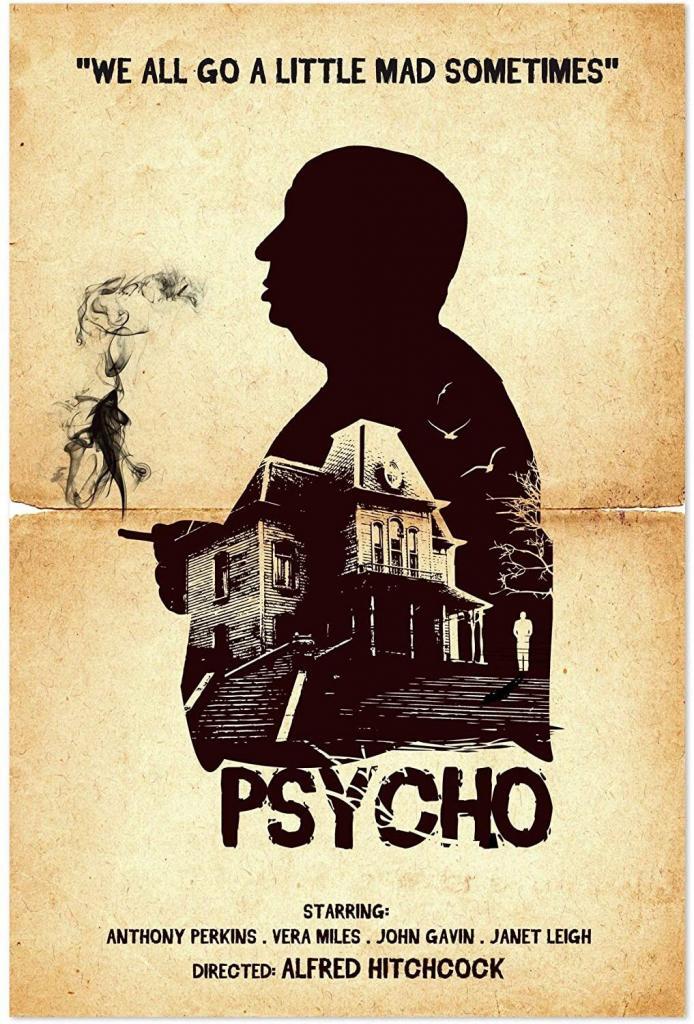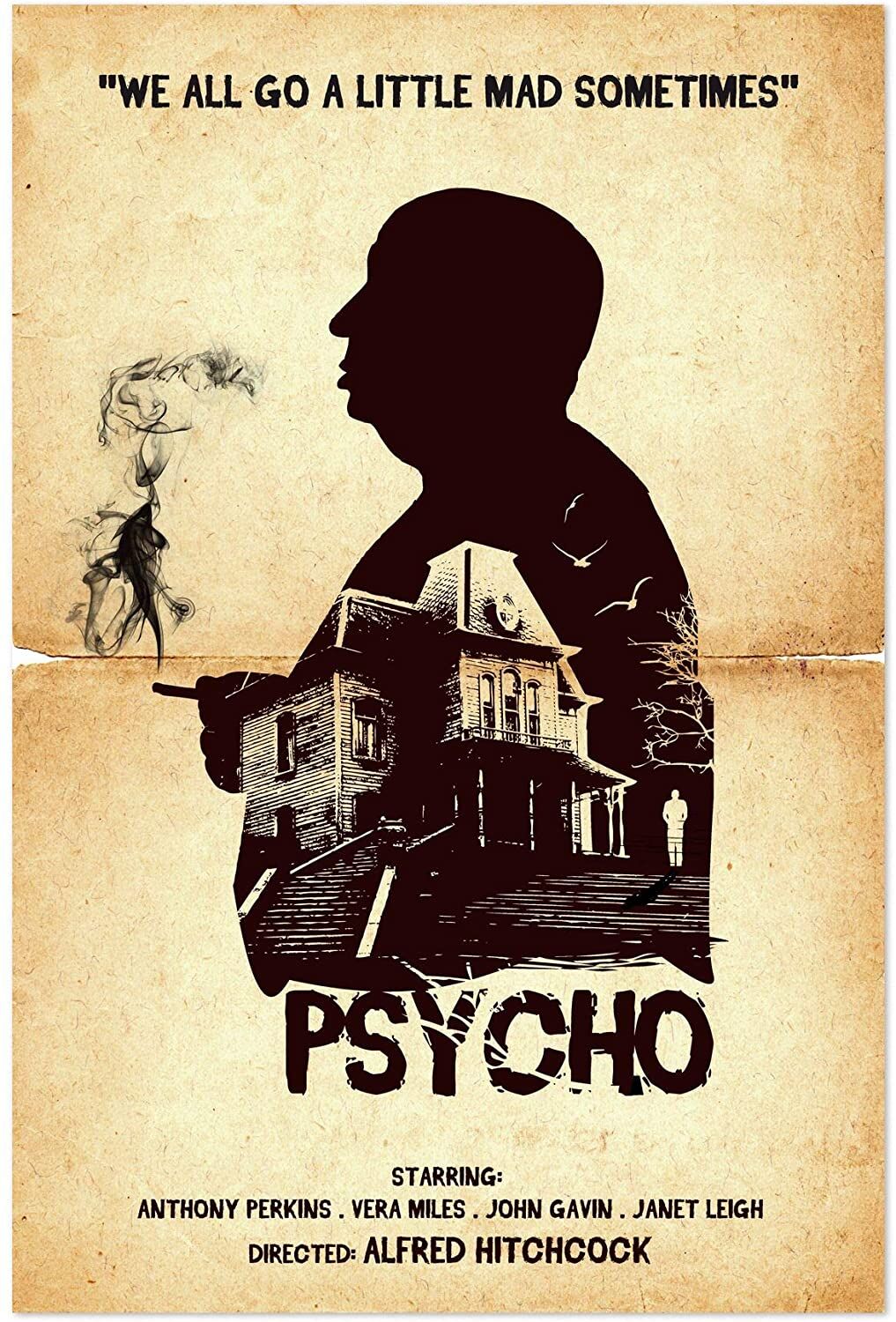During his lifetime, Robert Bloch traveled through the horror subgenres in pursuit of any and all things strange, morbid, or macabre. He started his writing career by imitating his mentor H.P. Lovecraft and subsequently becoming Lovecraft’s peer when he began to expand upon the Cthulhu mythos. It’s fair to say that without the influence and encouragement of Lovecraft, Bloch may never have become the successful and prolific author of horror fiction.
The Wildly Successful Novel?
It’s true that “millions of people across the globe know Psycho very well,” (Hood and Szumskyj, 102) but the Pyscho that they know is the Alfred Hitchcock film adaptation—to say that as many of them are familiar with the original novel by Robert Bloch would simply be false. Truth be told, however, without the masterful original inspiration, there would be no Psycho film franchise and massive following that it has had over the years.
All in all, Bloch himself was quite satisfied with how the movie adaptation came out, not to mention the fact that he regularly quoted Hitchcock when he reminded people that, “Psycho all came from Robert Bloch’s book. The scriptwriter, Joseph Stefano, a radio writer, he had been recommended by my agents MCA, contributed dialogue mostly, no ideas.” This apparently tickled Bloch so much that he even repeated it in his own unofficial biography Once Around the Bloch. He wanted everyone to know how much he endorsed the movie as a great representation of his book, this was a change in direction for Hitchcock, who had a history of taking artistic liberties when adapting other novels to the screen—consider, for example, the differences between Hitchcock’s The Birds (19363) and Daphne Du Maurier’s The Birds and Other Stories.
Was Psycho (1959) Based on a True Story?
Bloch had a pretty obsessive fascination with psychopaths and serial killers in general, in fact, the inspiration for his masterful novel Psycho (1959) was loosely based on “the infamous real-life Wisconsin serial murderer Ed Gein” (Hood and Szumskyj, 104). In 1985, Bloch gave an interview to Ron Leming where he disclosed the fact that at the time Gein’s crimes were discovered, he had lived only twenty-nine miles away from where Gein had lived in Plainfield, Wisconsin. It was upon this discovery that Bloch became obsessed with the idea of this psychotic murderous person living in plain sight, perhaps even being the seemingly kind neighbor who would fly under the radar. Although Bloch didn’t intend for the novel to read like a biography of Gein’s life, he did take elements from his life as inspiration for his main character, Norman Bates. Ed Gein was, during his early years, a poor loner raised by troubled parents; his father was an alcoholic and his mother a domineering and fanatically religious woman who exerted her monstrously controlling influence upon Ed and his older brother Henry. It’s not terribly surprising that Henry ended up dying in a fire under suspicious circumstances in their family home.
Alfred Hitchcock’s Film Adaptation: Psycho (1960)
When Alfred Hitchcock purchased the rights of Robert Bloch’s novel Psycho (1959) for a meager $9,500 he did so anonymously—it wasn’t until closer to the release of the film that he came to find out. Hitchcock’s screenwriter Joseph Stefano remained incredibly true to the original story, altering the screenplay only minimally to fit the infamous director’s vision.
Hitchcock’s wildly successful film continues to dominate the public consciousness and, indeed, its dreams and nightmares: the stark, indelible black-and-white images, the characters, the suspense and horror of the storyline, the infamous shower scene, Norman Bates as masterfully portrayed by the unnerving Anthony Perkins, the ultimate unveiling of “Mrs. Bates,” the unforgettably desolate setting of the little neglected dark motel off the road far from the main highway and the house behind it—all this has, by the present day, become such a part and parcel of our culture that for many, Psycho is just one of Hitchcock’s most popular and shocking films, now as then upon its release in 1960.
Scott D. Briggs, “The Keys to the Bates Motel: Robert Bloch’s Psycho Trilogy” in The Man Who Collected Psychos (2009)

Trickery in the Theater
Hitchcock was possibly at the height of his showmanship when the 1960s thriller Psycho came out. Now, when we look back at how he maximized the attention of this legendary film’s release, we can see how blatant of a publicity stunt it really was.
Kudos to Hitchcock though, because he committed to it to such a degree that he made it abundantly clear that, in no uncertain terms, no one was allowed into the theater once the feature had begun.
Stationed outside each box office where the film was being featured was a five-foot-tall cardboard standee of Hitchcock himself, holding a sign that warned theater attendees of the following:
WE WON’T ALLOW YOU to cheat yourself! You must see PSYCHO from beginning to end to enjoy it fully.
Therefore, do not expect to be admitted into the theatre after the start of each performance of the picture. We say no one – and we mean no one – not even the manager’s brother, the President of the United States, or the Queen of England (God bless her)!
– Alfred Hitchcock
Now, if you have seen this classic thriller, you’ll know exactly why Hitchcock didn’t want people to walk in late and spoil the movie for themselves, but if you don’t know why—consider the following:
The synopsis of the movie is that “a Phoenix secretary embezzles $40,000 from her employer’s client, goes on the run, and checks into a remote motel run by a young man under the domination of his mother.” To go along with this, the theatrical trailer for the movie shows the star of the film as Janet Leigh—Leigh’s part in the movie, while substantial to the story, is tragic and short-lived. This was incredibly controversial and shocking to audience members who, having watched the trailer, expected her to be in the entire movie. Classic Hitchcock.
The Remake—Psycho (1998)
While the remake from 1998 didn’t add any content or context that enriched the movie from the original Bloch creation, it did come across as a reverential and faithful scene-by-scene retelling of the original movie. Vince Vaughn and Anne Heche play our main characters and do these classic scenes a decent amount of justice. Other than being a modernized version of the original film, there isn’t much that this movie brings to the table—I still personally enjoy watching it occasionally.
Work Cited
Bloch, Robert. Psycho. Blackstone Audio, Inc., 1959.
Hood, Robert, and Szumskyj, Benjamin. The Man Who Collected Psychos: Critical Essays on Robert Bloch. McFarland, 2009.
Sorene, Paul. “Alfred Hitchcock’s Rules for Watching Psycho And Behind The Scenes Photos (1960).” Flashbak, 30 Oct. 2017, flashbak.com/alfred-hitchcocks-rules-watching-psycho-behind-scenes-photos-1960-389260/.

Georgia-based author and artist, Mary has been a horror aficionado since the mid-2000s. Originally a hobby artist and writer, she found her niche in the horror industry in late 2019 and hasn’t looked back since. Mary’s evolution into a horror expert allowed her to express herself truly for the first time in her life. Now, she prides herself on indulging in the stuff of nightmares.
Mary also moonlights as a content creator across multiple social media platforms—breaking down horror tropes on YouTube, as well as playing horror games and broadcasting live digital art sessions on Twitch.


